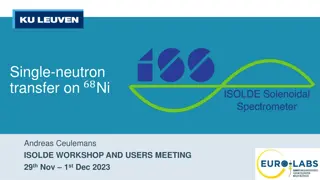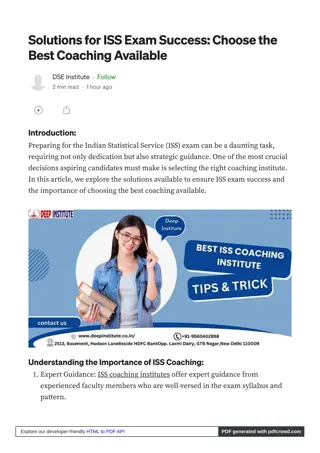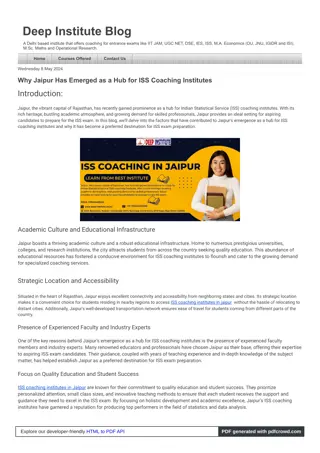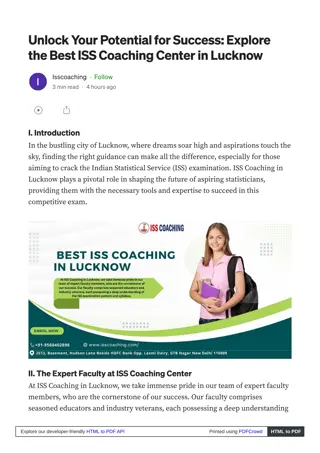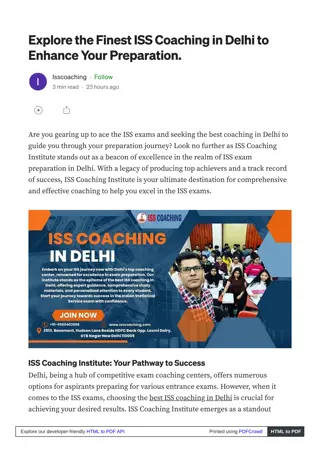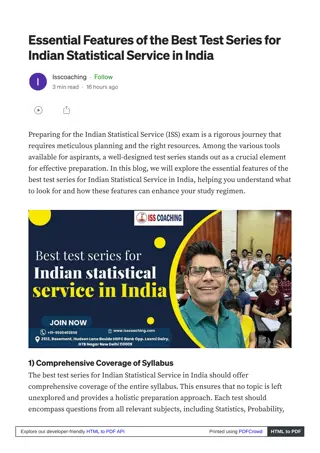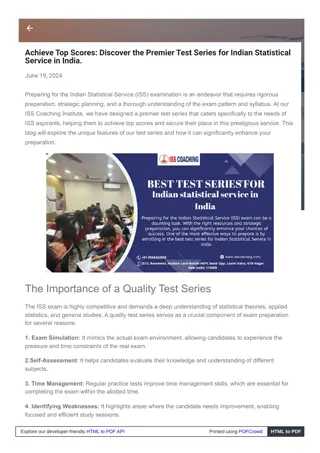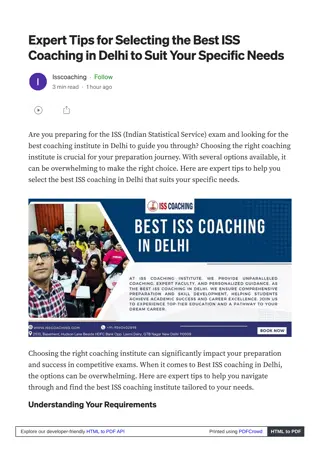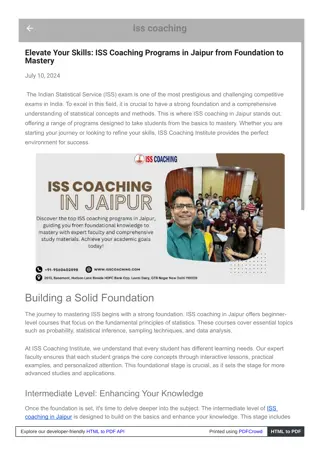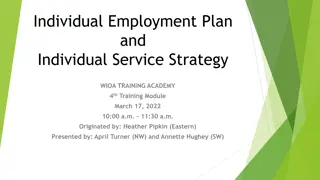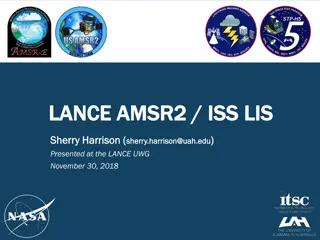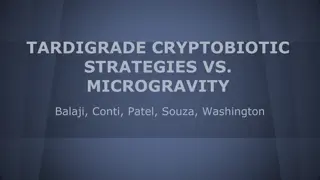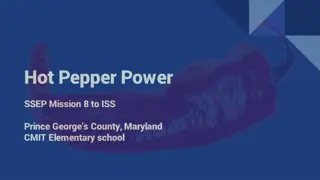
Improving Secondary Science Through Evidence-Based Practices
Discover how Best Evidence Science Teaching can help educators implement evidence-based practices in secondary science education. Explore resources, guidance, and recommendations to enhance student understanding and learning in key science concepts.
Download Presentation

Please find below an Image/Link to download the presentation.
The content on the website is provided AS IS for your information and personal use only. It may not be sold, licensed, or shared on other websites without obtaining consent from the author. If you encounter any issues during the download, it is possible that the publisher has removed the file from their server.
You are allowed to download the files provided on this website for personal or commercial use, subject to the condition that they are used lawfully. All files are the property of their respective owners.
The content on the website is provided AS IS for your information and personal use only. It may not be sold, licensed, or shared on other websites without obtaining consent from the author.
E N D
Presentation Transcript
& @BestEvSciTeach www.BestEvidenceScienceTeaching.org
Whats ?
Hundreds of resources All based on research evidence ONLINE, OPEN-ACCESS & FREE! RESPONSE ACTIVITIES PROGRESSION TOOLKITS DIAGNOSTIC QUESTIONS to help teachers develop evidence-based practices to test and consolidate students understanding of key concepts in science.
and Improving Secondary Science
The Education Endowment Foundation (EEF) published a guidance report in 2018 titled Improving Secondary Science The report cites Best Evidence Science Teaching as a good source of: diagnostic questions activities that promote metacognitive talk and dialogue The report makes seven main recommendations
1 Preconceptions Build on the ideas that pupils bring to lessons 2 Self-regulation Help pupils direct their own learning 3 Modelling Use models to support understanding 4 Memory Support pupils to retain and retrieve knowledge 5 Practical work Use practical work purposefully as part of a learning sequence 6 Language of science Develop scientific vocabulary 7 Feedback Use structured feedback to move on pupils thinking
How can BEST help you work towards the recommendations of the EEF Improving Secondary Science report (2018)? 1 Preconceptions: Build on the ideas that pupils bring to lessons 2 Self-regulation: Help pupils direct their own learning 3 Modelling: Use models to support understanding 4 Memory: Support pupils to retain and retrieve knowledge 5 Practical Work: Use practical work purposefully and as part of a learning sequence 6 Language of Science: Develop scientific vocabulary and support pupils to read and write about science 7 Feedback: Use structured feedback to move on pupils thinking How How How How How How How can help: can help: can help: can help: can help: can help: can help: Research summaries Research findings on common preconceptions and misunderstandings explained clearly Small-group discussion activities Engage students in metacognitive dialogue Building understanding Explicit use of models help to explain difficult ideas and make predictions The big ideas of science Developed through key concepts Purposeful practical work Practical activities focused on developing understanding and key competencies Focused cloze activities Consolidate understanding of key scientific terms Progression toolkits All that is needed for progression without levels, including: Progression pathways Research-Informed learning steps for each key concept Key concepts Focus learning to reduce cognitive load with appropriately- sequenced learning steps Talking heads activities Encourage exploratory talk Re-phrasing activities Students encouraged to express scientific ideas in their own words Diagnostic questions Quickly identify the preconceptions and misunderstandings students have Critiquing a representation activities Help students to think critically about scientific models by identifying their benefits and limitations Predict-explain- observe-explain activities Challenge students to apply what they know Diagnostic questions Provide feedback from student to teacher, to help you decide what happens next Building explanations Help students to link scientific ideas through sequencing activities and explanatory stories Conceptual progression maps Focus teaching in students zone of proximal development Identifying evidence activities Challenge students to identify the key ideas in passages of scientific writing Response activities Adaptive teaching to meet students learning needs and build understanding Cognitive conflict Practical activities to challenge students misunderstandings Response activities Challenge misunderstandings and build scientific thinking Research evidence-informed resources FREE to download from www.BestEvidenceScienceTeaching.org
Moving through the digestive system Simple multiple choice Food we swallow moves through the digestive system. What is the main thing that causes food to move through the digestive system? A Gravity Contraction of muscles in the digestive system B Vibrations from body movements such as walking C Swallowing more food pushes it along D
Moving through the digestive system 1 Preconceptions Build on the ideas that pupils bring to lessons Food we swallow moves through the digestive system. What is the main thing that causes food to move through the digestive system? 7 Feedback Use structured feedback to move on pupils thinking A Gravity Contraction of muscles in the digestive system B 4 Memory Support pupils to retain and retrieve knowledge Vibrations from body movements such as walking C Swallowing more food pushes it along D
Respiration and breathing Focused cloze Respiration is one of the processes carried out by living things. Complete the sentences in the box. You should only use respiration or breathing to fill each gap. Moving air into and out of your lungs is called . Using food as fuel to provide energy is called . happens in all living things. only happens in some living things. does not happen in plants. provides living things with oxygen for .
Respiration and breathing 6 Language of science Focused cloze Respiration is one of the processes carried out by living things. Develop scientific vocabulary Complete the sentences in the box. 1 Preconceptions You should only use respiration or breathing to fill each gap. Build on the ideas that pupils bring to lessons Moving air into and out of your lungs is called . Using food as fuel to provide energy is called . 7 Feedback happens in all living things. Use structured feedback to move on pupils thinking only happens in some living things. does not happen in plants. 4 Memory provides living things with oxygen for . Support pupils to retain and retrieve knowledge
Particle model - melting Critiquing a model The diagram is from a textbook. It shows the particle model of a substance in the solid state melting so that the sample is in the liquid state. To talk about in your group State three ways in which you think the diagram is a good representation of a substance melting. State three ways in which you think the diagram is not an accurate representation of a substance melting.
Particle model - melting 3 Modelling 2 Critiquing a representation Self-regulation Help pupils direct their own learning The diagram is from a textbook. Use models to support understanding It shows the particle model of a substance in the solid state melting so that the sample is in the liquid state. 1 Preconceptions Build on the ideas that pupils bring to lessons 7 Feedback To talk about in your group Use structured feedback to move on pupils thinking State three ways in which you think the diagram is a good representation of a substance melting. 4 Memory State three ways in which you think the diagram is not an accurate representation of a substance melting. Support pupils to retain and retrieve knowledge 18
Grape expectations PEOE Grapes sink in tap water. Cooking oil floats on tap water. Predict What will happen when grapes are put into cooking oil? Explain Explain why you think this will happen. Watch the demonstration Observe Describe what you see. ? Explain Were your prediction and explanation correct? Try to improve your first explanation to explain what happens more clearly.
Grape expectations 5 Practical work PEOE Grapes sink in tap water. Cooking oil floats on tap water. Use practical work purposefully as part of a learning sequence Predict What will happen when grapes are put into cooking oil? 2 Self-regulation Help pupils direct their own learning Explain Explain why you think this will happen. 1 Preconceptions Watch the demonstration Observe Describe what you see. Build on the ideas that pupils bring to lessons ? 4 Memory Explain Were your prediction and explanation correct? Try to improve your first explanation to explain what happens more clearly. Support pupils to retain and retrieve knowledge
Evidence of impact? Evidence of impact? We have undertaken case studies in secondary schools using the BEST resources We have conducted: lesson observations teacher interviews Observational tool derived from the EEF Improving Secondary Science report
Evidence of impact? Evidence of impact? Yes! Yes! Preconceptions Self-regulation Teachers reported that the research summaries embedded in the BEST resources helped improve their planning, particularly how they: Build on the ideas that pupils bring to lessons Help pupils direct their own learning Modelling Memory sequence ideas Use models to support understanding Support pupils to retain and retrieve knowledge describe key concepts select analogies and models Practical work Language of science Use practical work purposefully as part of a learning sequence Develop scientific vocabulary In lessons, we observed teachers using the BEST resources to develop practices in all seven of the areas identified in the EEF report Feedback Use structured feedback to move on pupils thinking
Evidence of impact? Evidence of impact? Yes! Yes! The research summaries embedded into the BEST resources appear to: act as bite-size episodes of self-directed professional development lead to immediate changes in practice Further research is needed to investigate whether these changes: elicit long-term adaptation of pedagogy impact student outcomes Atkinson, L., Dunlop, L., Bennett, J., Fairhurst, P. and Moore, A. (2020) Best Evidence Science Teaching: research evidence in action. School Science Review, 102 (379), 55-63.
@BestEvSciTeach www.BestEvidenceScienceTeaching.org


